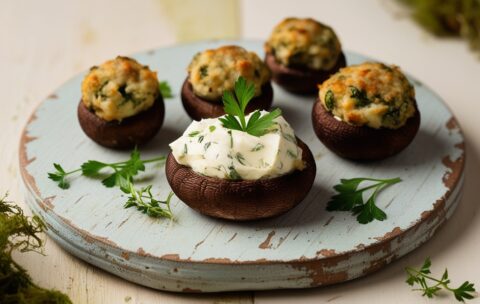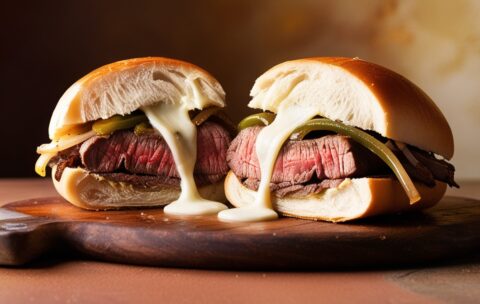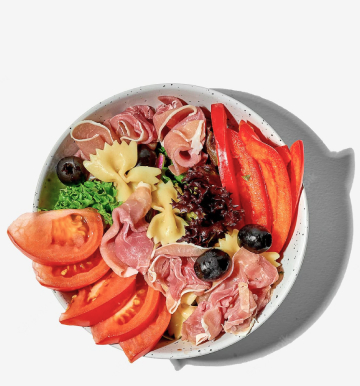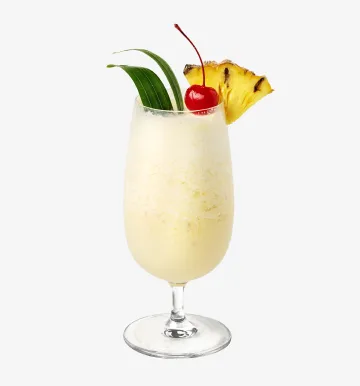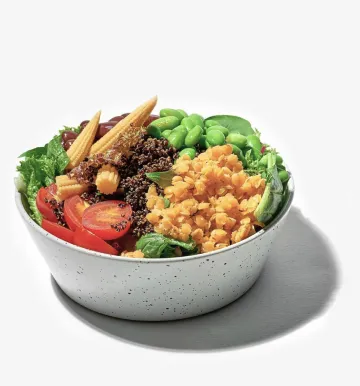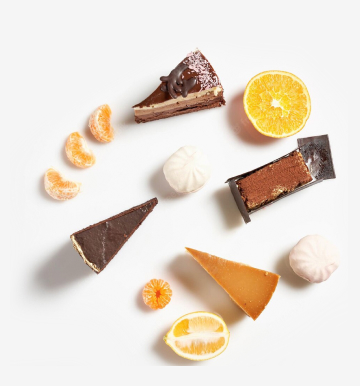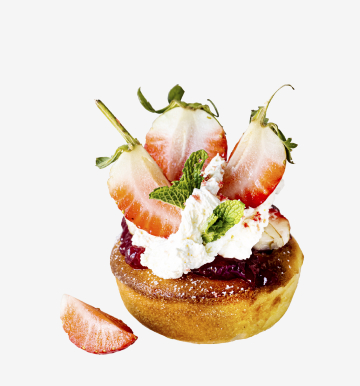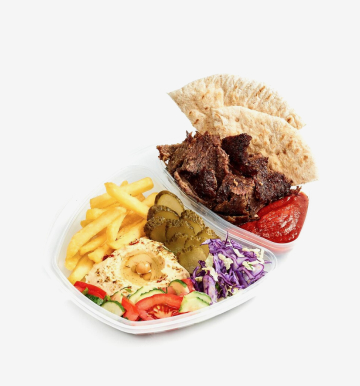Home Update 02
October 4, 2023 2025-06-05 13:04Home Update 02
Become a Home Chef
Learn to cook from scratch and master restaurant-quality meals in your own kitchen. Perfect for beginners and food lovers.

Our Top Courses
We've selected the best programs to get you started. Each course offers step-by-step lessons, hands-on recipes, and guaranteed results — even for beginners.
Berry Gradient Ice Cream
3 Lessons
2.4 hours
Intermediate
What you'll learn
How to prepare and strain fresh berry purees for a smooth texture
Techniques for building distinct, colorful layers without mixing
Tips on freezing timing between layers for clean separation
How to balance sweet, tart, and creamy flavors across layers
Proper slicing and serving methods to highlight the gradient
Creative ways to present and garnish layered frozen desserts
Bloody Mary
3 Lessons
1.7 hour
Intermediate
What you'll learn
How to balance tomato juice, vodka, and spice for a perfectly seasoned cocktail.
Techniques for layering Worcestershire sauce, hot sauce, and horseradish to build depth of flavor.
Proper methods to rim a glass (celery salt, pepper, or spice blend) for added texture and taste.
Creative garnish arrangements—from classic celery stalks to pickles, olives, and bacon.
Ways to customize heat level and saltiness to suit different preferences.
Tips for preparing a large batch (pitcher or bar-style) without sacrificing freshness.
Stuffed Mushrooms with Herb Cream Cheese
2 Lessons
50 minutes
Intermediate
What you'll learn
How to select and clean the right variety of mushrooms for stuffing (e.g., cremini or button).
Techniques for preparing a smooth, flavorful herb cream cheese filling (including chopping herbs and incorporating garlic).
Properly hollowing and seasoning mushroom caps to maximize flavor absorption.
Baking methods to achieve a golden top and tender mushroom texture without overcooking.
Garnishing tips to add color and contrast (e.g., fresh parsley, red pepper flakes).
Storing and reheating strategies to maintain freshness when making ahead.
Cosmopolitan
6 Lessons
5.2 hours
Intermediate
What you'll learn
How to select and measure high-quality vodka, cranberry juice, Triple Sec (or Cointreau), and fresh lime juice for optimal balance.
Proper shaking technique: ice selection, shaker fill level, and timing to achieve a silky-smooth texture and bright color.
Glassware choice and chilling methods (using a martini glass vs. a coupe).
Classic garnish options—lime wheel or twist—and how to express citrus oils for aroma.
Variations on the original recipe (e.g., swapping orange liqueurs or adjusting tartness).
Tips for batch-make a pitcher of Cosmopolitans without losing the vibrant hue and balanced taste.
Mojito
3 Lessons
2.3 hours
Intermediate
What you'll learn
How to properly muddle mint and sugar to release essential oils without bruising the leaves.
The ideal ratio of white rum, fresh lime juice, and simple syrup for a perfectly balanced drink.
Techniques for layering ingredients and adding soda water to preserve carbonation.
Tips for selecting the freshest mint varieties and hand-rolling or tearing leaves.
Methods to crush ice at home for that classic “frosty” Mojito texture.
Variations on the traditional recipe, including flavored syrups or fruit additions.
Smoked Salmon and Dill Canapés
3 Lessons
1.8 hour
Intermediate
What you'll learn
Techniques for selecting high-quality cold-smoked salmon with optimal texture and flavor.
How to prepare crisp bases—whether toasted brioche rounds or thin cucumber slices—for a sturdy yet delicate platform.
Methods for making a light, herbed cream cheese spread that balances zest and creaminess.
Proper assembly and layering to ensure each canapé holds together and presents beautifully.
Philly Cheesesteak
3 Lessons
3.8 hours
Intermediate
What you'll learn
How to choose and prepare the ideal cut of beef (ribeye or top round) for optimal flavor and tenderness.
Techniques for slicing steak paper-thin—even when working with untrimmed roasts—to ensure quick, even cooking.
Methods for properly caramelizing onions (and optional peppers) so they develop sweetness without burning.
The art of toasting a hoagie roll: achieving a lightly crisp exterior that still yields under melted cheese.
Cheese-melting strategies (provolone, American, or Cheez Whiz): achieving a gooey, coated consistency without overcooking.
Assembly order and timing: layering meat, onions, and cheese so each bite is balanced and warm.
Customization ideas: adding mushrooms, hot peppers, or garlic aioli to elevate traditional flavors.
Layer Cake Construction & Filling Strategies
3 Lessons
58 minutes
Intermediate
What you'll learn
Baking for Uniform Layers: How to prep pans (lining, spray), adjust batter distribution, and use baking strips or temperature hacks for flat, even cake tops.
Leveling & Stacking: Knife vs. cake leveler methods; applying a thin “crumb coat” of frosting; inserting dowels or straws for multi-tier support; stacking layers without slippage.
Filling Varieties & Textures: Selecting between custards, curds, fruit compotes, ganaches, buttercreams, and mousse fillings—considering sweetness, moisture control, and pairings (e.g., raspberry curd with chocolate cake).
Preventing Leaks & Weeping: Techniques for sealing cake layers (buttercream dam, chocolate collar), ensuring fillings stay contained; chilling strategies to set fillings before final coating.
Flavor Harmony & Balance: Matching cake flavor (vanilla, chocolate, spice) with filling profiles (tart, sweet, creamy) to avoid one element overpowering another; adjusting sweetness levels.
Finishing & Presentation Prep: Applying a smooth final coat of frosting or ganache; creating optional decorative borders or piped accents; slicing tips for clean, even servings.
Buttercream Icing Techniques
5 Lessons
59 minutes
Intermediate
What you'll learn
Buttercream Foundations: Basic ratios for American, Swiss, Italian, and French buttercreams; key differences in texture, sweetness, and stability.
Temperature Control: How to handle ingredients (room-temperature vs. chilled butter, sugar syrup stages) to prevent graininess or separation.
Flavoring & Infusing: Incorporating extracts, fruit purées, ganache, or cocoa; balancing sweetness and fat without compromising consistency.
Coloring Strategies: Best practices for gel vs. powdered colors; preventing “bleeding” or streaking when blending multiple hues (e.g., ombré or watercolor effects).
Spreading & Smoothing: Techniques for achieving glass-smooth sides (bench scraper, icing turntable, hot spatula method) and avoiding common marks or air pockets.
Piping & Decorative Textures: Creating rosettes, ruffles, ruffles, basketweave, petals, and multi-tone piping (hidden two-tone tips, reversible bags).
Stabilizing for Warm Climates: Adjusting recipes (adding meringue powder or corn syrup) so buttercream holds shape in humid or warm environments.
Troubleshooting Common Issues: Fixing grainy buttercream, curdled mixtures, overly soft or too-stiff icing; rescue methods (re-creaming, adjusting sugar syrup).
Decorative Piping & Sugar Flowers
3 Lessons
4.3 hours
Intermediate
What you'll learn
Icing Consistency & Color Blending
Adjusting buttercream and royal icing to the proper firmness for different piping tasks.
Techniques for tinting icing and gum paste to achieve natural, gradient effects.
Piping Basics to Advanced Motifs
Foundational strokes (dots, lines, shells) leading to scrolls, rosettes, ruffles, and lace patterns.
Creating texture, dimension, and contrast through varying pressure, speed, and tip selection.
Sugar Flower Construction
Preparing and conditioning gum paste and fondant for pliability.
Forming petals, leaves, and buds for common flowers (roses, peonies, ranunculus).
Assembling individual elements into realistic bouquets and sprays.
Composition & Placement
Designing balanced cake layouts: focal points, color harmony, and scale.
Securing decorations on tiered and multi-surface cakes without collapse.
Troubleshooting & Finishing Touches
Preventing issues such as cracking, sagging, or color bleeding.
Applying final details: dusting, veining, and edible luster for lifelike appearance.
Choose Your Category
Our courses are grouped by category to help you find what suits your taste. From quick dinners to gourmet desserts — start with what inspires you.



About Our Culinary Journey
We are passionate about bringing the joy of cooking to everyone. Our mission is to empower food lovers with the skills and confidence to create delicious meals at home. With expert chefs, innovative teaching methods, and a love for culinary arts, we’re here to inspire your kitchen adventures.
Our Commitment
Everyone can cook well. Our courses offer clear guidance to ensure success for all skill levels.
Community Focus
Join our foodie community. Share creations and grow in a supportive environment.
Why Choose Our Culinary Courses?
Our courses are designed to make cooking fun, accessible, and inspiring. Whether you're a beginner or a seasoned cook, our unique features will help you elevate your skills and unleash your culinary creativity.

Expert Instructors
Learn from world-class chefs with years of experience. Our instructors guide you step-by-step, sharing professional tips.

Flexible Learning
Study at your own pace, anytime, anywhere. Our online platform offers 24/7 access to lessons, so you can fit cooking into your busy schedule.

Hands-On Recipes
Practice with real recipes designed for all skill levels. From classic dishes to modern creations, you’ll master meals that impress every time.
What Our
Students Say
Hear from our happy students who have transformed their cooking skills with our courses. From beginners to seasoned cooks, our community loves sharing their success stories!
"This course completely changed how I cook! The instructors are so knowledgeable, and the lessons are easy to follow. I’m now confident making dishes I never thought I could."
Emma Johnson
"I love the flexibility of these courses. I can learn at my own pace and still feel supported. The recipes are amazing, and I’ve impressed my family with new dishes!"
Michael Chen
"The vegan cooking course was a game-changer for me. I learned so many creative ways to make plant-based meals that taste incredible. Highly recommend!"
Sophie Martinez
"The hands-on approach made learning so fun! I went from burning toast to baking artisan bread in weeks. Thank you for such an inspiring experience!"
James Carter
Discover Our Newest Culinary Courses
Get inspired by our latest additions! These exciting courses bring fresh ideas and techniques to your kitchen, perfect for food lovers eager to try something new. Browse our carousel to find your next culinary adventure.
The Winston
4 Lessons
1.4 hour
Intermediate
What you'll learn
Ingredient Harmony: How to select a high-quality single-malt or blended Scotch (or bourbon) and pair it with an appropriate dry vermouth.
Bitters Application: Which bitters complement whisky and vermouth, and how to dose them for optimal aroma without overpowering the base spirits.
Stirring vs. Shaking: Why “The Winston” is best built in a mixing glass, and how to stir to achieve crystal clarity and ideal dilution.
Garnishing Techniques: Crafting the perfect citrus twist and expressing its oils to accentuate the drink’s aromatics.
Glassware Selection: Choosing the right glass (coupe or old-fashioned) to showcase the cocktail’s color and maintain temperature.
Decorative Piping & Sugar Flowers
3 Lessons
4.3 hours
Intermediate
What you'll learn
Icing Consistency & Color Blending
Adjusting buttercream and royal icing to the proper firmness for different piping tasks.
Techniques for tinting icing and gum paste to achieve natural, gradient effects.
Piping Basics to Advanced Motifs
Foundational strokes (dots, lines, shells) leading to scrolls, rosettes, ruffles, and lace patterns.
Creating texture, dimension, and contrast through varying pressure, speed, and tip selection.
Sugar Flower Construction
Preparing and conditioning gum paste and fondant for pliability.
Forming petals, leaves, and buds for common flowers (roses, peonies, ranunculus).
Assembling individual elements into realistic bouquets and sprays.
Composition & Placement
Designing balanced cake layouts: focal points, color harmony, and scale.
Securing decorations on tiered and multi-surface cakes without collapse.
Troubleshooting & Finishing Touches
Preventing issues such as cracking, sagging, or color bleeding.
Applying final details: dusting, veining, and edible luster for lifelike appearance.
Pulled Pork Sandwich
4 Lessons
3.3 hours
Intermediate
What you'll learn
Choosing the Right Cut: How to select a well-marbled pork shoulder (Boston butt) and understand why fat content matters for pulled pork.
Seasoning & Rubs: Crafting a balanced dry rub with spices and aromatics to build depth of flavor.
Cooking Methods: Techniques for both traditional smoker smoking (wood vs. charcoal), oven roasting, and slow-cooker approaches—pros and cons of each.
Temperature Control: Monitoring internal meat temperature, knowing when to wrap (the “Texas crutch”), and recognizing the “stall” point.
Shredding & Resting: Properly resting the cooked pork, shredding techniques (fork vs. claw), and keeping the meat moist.
BBQ Sauce Basics: Making a homemade barbecue sauce (vinegar-based, tomato-based, or mustard-based variations) and adjusting sweetness, acidity, and heat.
Sandwich Assembly: Choosing the ideal bun (brioche, kaiser roll, or potato roll), layering techniques to prevent sogginess, and adding complementary toppings (coleslaw, pickles, onions).
Plate Presentation & Storage: Tips for presentation (plating, garnishes) and storing any leftovers without losing texture or flavor.
Paella Valenciana
2 Lessons
3.3 hours
Intermediate
What you'll learn
History and Regional Context
Origins of Paella Valenciana and its connections to Valencian agricultural traditions.
Distinctions between classic Valencian paella, seafood paella (Paella de Mariscos), and other regional variants.
Selecting and Preparing Ingredients
Rice varieties (Bomba vs. Calasparra) and their impact on texture.
Choosing quality proteins (chicken and/or rabbit), native beans (judía verde, garrafó), olive oil, and saffron threads.
Preparing vegetables: green beans (bajoqueta), garrafó beans, fresh tomatoes, and garlic.
Cooking Techniques and Timing
Building a sofrito base: sautéing meat, vegetables, and spices to develop depth of flavor.
Proper rice-to-liquid ratio and how to incorporate stock infused with saffron.
Achieving the prized socarrat (crispy rice crust) without burning.
Adjusting heat levels for even cooking and optimal moisture absorption.
Presentation and Serving
Traditional ways to serve Paella Valenciana—family style straight from the paellera.
Garnishing options (lemon wedges, fresh parsley) to enhance aroma and appearance.
Tips for reheating and storing leftovers without compromising texture.
Italian Tiramisu with Rare Coffee Varieties
4 Lessons
3 hours
Intermediate
What you'll learn
Identifying and sourcing rare coffee beans ideal for brewing tiramisu espresso.
Precision brewing methods (espresso and cold brew) to extract optimal flavor without bitterness.
Making smooth mascarpone cream using traditional whisking and folding techniques.
Assembling layers of coffee-soaked ladyfingers and mascarpone for consistent texture.
Balancing sweetness, coffee intensity, and cream thickness for a perfect mouthfeel.
Presentation tips to showcase coffee beans alongside each serving.
Lamb Rogan Jos
3 Lessons
2.2 hours
Intermediate
What you'll learn
Outcome Description
Spice Selection & Preparation Identify and roast whole spices (cinnamon, cardamom, cloves) to form the foundation of the masala.
Yogurt Marinade Techniques Use yogurt and acid (lime or lemon) to tenderize lamb while preserving a creamy texture.
Building the Masala Layer ground spices (Kashmiri chili powder, coriander, cumin) for a balanced, vibrant curry base.
Browning & Layering Flavors Sear lamb to lock in juices, then deglaze with aromatics (onion, ginger, garlic) for depth.
Slow Simmering & Consistency Regulate heat and timing to allow lamb to become fork-tender without curdling the yogurt.
Finishing Touches Garnish with fresh cilantro, julienned ginger, and a drizzle of ghee for aroma and shine.
Mojito
3 Lessons
2.3 hours
Intermediate
What you'll learn
How to properly muddle mint and sugar to release essential oils without bruising the leaves.
The ideal ratio of white rum, fresh lime juice, and simple syrup for a perfectly balanced drink.
Techniques for layering ingredients and adding soda water to preserve carbonation.
Tips for selecting the freshest mint varieties and hand-rolling or tearing leaves.
Methods to crush ice at home for that classic “frosty” Mojito texture.
Variations on the traditional recipe, including flavored syrups or fruit additions.
Old Fashioned
7 Lessons
1.9 hour
Intermediate
What you'll learn
How to properly muddle a sugar cube (or measure simple syrup) with bitters to create the foundation of an Old Fashioned.
Differences between using bourbon versus rye whiskey: flavor profiles, proof considerations, and regional traditions.
Techniques for selecting and expressing citrus peel to maximize aromatic oils without adding bitterness.
Best practices for choosing ice (large cubes or spheres) to control dilution and maintain temperature.
Stirring methods that achieve a silky texture and proper dilution—timing, tool grip, and motion.
Variations on the classic recipe, such as adding a barspoon of water, swapping citrus types, or using flavored bitters.
Mini & Individual Cake Creations
3 Lessons
3 hours
Intermediate
What you'll learn
How to scale down classic cake recipes (sponge, chiffon, pound) for smaller molds and ring cutters
Techniques for creating uniformly shaped mini cakes: using acetate sides, ring molds, and layered inserts
Methods for preparing delicate fillings—fruit compotes, chocolate ganache, and flavored mousses—suited to individual portions
Decorating approaches tailored to small canvases: tempered chocolate accents, buttercream piping, and fresh garnishes
Temperature control and timing secrets that prevent overbaking when working with small molds
Ideas for plating and packaging individual cakes to enhance presentation for events or retail
Berry Gradient Ice Cream
3 Lessons
2.4 hours
Intermediate
What you'll learn
How to prepare and strain fresh berry purees for a smooth texture
Techniques for building distinct, colorful layers without mixing
Tips on freezing timing between layers for clean separation
How to balance sweet, tart, and creamy flavors across layers
Proper slicing and serving methods to highlight the gradient
Creative ways to present and garnish layered frozen desserts



